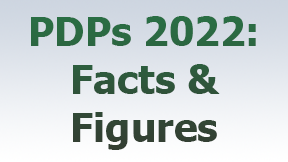 The Deductible
The Deductible
The maximum allowable deductible for Prescription Drug Plans (PDPs) in 2022 is $480. That doesn’t mean that everyone pays the $480 before your plan’s benefits start to kick in.
Many plans wave the deductible for tiers 1 and 2 generics. There is one plan that waives the deductible for only tier 1 drugs.
That means that if you take a tier 3, 4, or 5 prescription, generally speaking you will have to meet the deductible before the plans kicks in with its benefits.
There are a few higher premium plans that have a reduced deductible, and lastly, there are just a few spendy plans that have no deductible. Premium wise, these plans can start hitting the $100 per month level. As mentioned, the preponderance of the plans that are the best buys for most members have the $480 deductible.
Because so many of what used to be brand name prescriptions have gone generic, most people’s prescriptions are all generics. Here are just a few examples. The generic name follows the brand name.
Lipitor: Atorvastatin
Crestor: Rosuvastatin
Diovan: Valsartan
Micardis: Telmisartan
Prozac: Fluoxetine
Zoloft: Sertraline
Proscar: Finasteride
Flomax: Tamsulosin
Singular: Montelukast
Plavix: Clopidogrel
Here are some drugs that went generic so long ago that most people don’t recognize the original brand name:
Glucophage: Metformin
Toprol XL: Metoprolol succinate ER
Norvasc: Amlodipine
New Brand Name Drugs
The pharmaceutical industry has produced new brand-name drugs. Unfortunately, these new drugs are expensive—even with the help of the PDP.
For A-fib and other heart rhythm disorders: Eliquis and Xarelto
For diabetics: Jardiance, Trulicity, Tresiba, Ozempic, and Rybelsus.
What Puts You into the Coverage Gap, aka the Donut Hole
Once the total retail cost of your prescriptions hits $4,430, you go into the coverage gap. Remember, this is the full retail cost, not what you have paid in copays.
Let’s says “Allice” a taking a few low-cost generics but also the name brand and tier 3 drug XYZ. XYZ has a full retail cost of $600 per month. Alice’s PDP has the $480 deductible and a $47 copay for tier 3 drugs after she has met her deductible.
She’s paying $47 per month copay for XYZ and very little for her generics. Everything is doable. In August, Alice is rudely shocked when her pharmacist informs her that she owes $150 for her fill of XYZ. WHAT HAPPENED? she asks in stark disbelief. Her pharmacist explains that she is now in the coverage gap.
Here’s the math that put Alice in the gap.
7 months of XYZ (7 x $600) is $4,200. Throw in a little over $200 for the full retail cost for her generics for 7 months. At the beginning of August, the retail cost of her meds has exceeded $4,430. Alice is now in the coverage gap.
She now pays 25% of the retail cost of her brand name drugs and generics while she is in the coverage gap for the remainder of the year. Please keep in mind that it makes no differences if her Part D plan is embedded inside of a Medicare advantage plan. It all works the same
What Gets You out of the Coverage Gap?
When your True-out-of-Pocket (TRooP) cost hits $7,050, then you exit the coverage gap phase and go into the final Catastrophic coverage phase. Does this mean that you have spent $7,050?
The answer is no. The good news is that the manufacturer’s discount counts towards your TRooP totals. Let’s see how it works with Alice’s $600 XYZ prescription. Once she is in the gap, here’s how the $600 is covered.
Alice pays 25% or $150
The manufacturer of XYZ discounts the drug by 70% or $420
The PDP pays 5% or $30
The $150 that Alice pays along with the manufacturer’s discount of $420 counts towards Alice’s TRooP costs.
Catastrophic coverage phase
According to Medicare.gov, once you hit the Catastrophic coverage phase, you will pay no more than 5% of the cost for covered drugs for the rest of the year
Your PDP pays 15% and Medicare pays 80%. We have seen a few cases where a member had such expensive drugs that he blasted through the coverage gap and into the Catastrophic phase within the first few months of the year. End